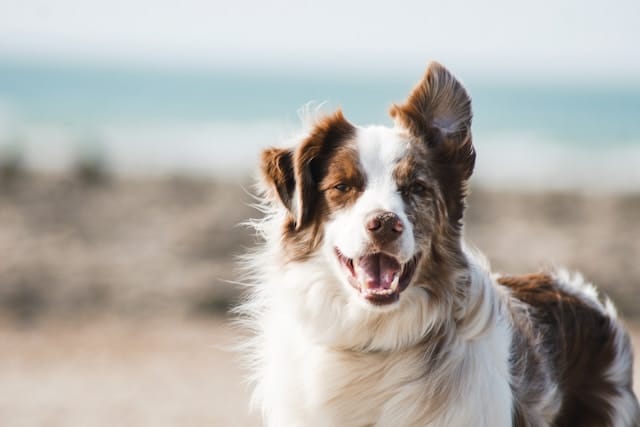How to Train Your Dog for Agility Sports Right in Your Backyard?

The sun is shining, and you’re outdoors on the fresh green grass. You’ve got your best buddy by your side, ready to have a little fun. No, we’re not talking about your human pal but your four-legged furry friend. Dogs are not just companions, they’re family. And just like any other family member, they need to stay active, not just for physical health but mental stimulation as well. What better way to keep them engaged than some agility training right in your own backyard?
Dog agility sports are an excellent way to bond with your pet while also providing a substantial workout for both you and your canine companion. It’s about communication, speed, and finesse. It is, without a doubt, a fantastic way to spend some quality time with your furry friend.
A voir aussi : How to Design a Pet-Friendly Workspace That Promotes Productivity and Comfort?
This comprehensive guide provides a step-by-step approach to setting up agility training for your dog in your backyard. So, let’s get started.
Getting Started
Before you dive into the world of dog agility training, there are a few key points to consider. Dog agility training can be a strenuous activity, make sure your dog is physically capable. Consult with your vet to ensure your furry friend is in peak condition for agility sports.
Cela peut vous intéresser : What Are the Best Strategies for Preventing Escape Attempts by Indoor Pets?
Next, consider the age of your dog. While you can teach an old dog new tricks, agility training is best started with younger dogs. Puppies are not just high-spirited and full of energy, but also more open to learning new things.
Building the Course
Building your backyard dog agility course can be a fun DIY project. The two main things to keep in mind while setting up your course are safety and variety.
Start small with hurdles. They can be built easily using garden stakes and plumbing tubes. The height should be adjustable depending on the size of your dog.
Tunnels are a must-have in agility courses. Children’s play tunnels work perfectly fine for this. Just ensure they are sturdy.
Weave poles are another essential part of the track. You can use flexible drain pipes or PVC pipes stuck in the ground. They should be spaced about 60 centimeters apart.
Don’t forget to include a seesaw in your course. It adds an element of excitement and challenge. A plank with a sturdy fulcrum would do the trick.
Training Techniques
Training your dog to navigate through the agility course can be a fun but challenging task. The key here is patience and consistency.
Start by walking your dog through the course, guiding him with a leash. Your dog needs to get familiar with the different obstacles and overall layout.
Use treats or toys to motivate and reward your dog. When your dog successfully completes a task, reward him immediately, so he associates the action with a positive outcome.
Use voice commands to guide your dog. Dogs respond well to vocal cues, so use them consistently to guide them through the obstacles.
Do not force your dog through the course. If your dog seems scared or uncomfortable, go back to a previous level or obstacle where he felt comfortable.
Consistency is Key
Just like any other form of training, consistency is the key to success in dog agility training. Regular training sessions, preferably at the same time each day, will help your dog get into a routine.
However, make sure not to overwork your dog. Ensure your training sessions are balanced with ample rest periods in between. Monitoring your dog’s body language can provide useful clues about their comfort levels and physical limitations.
Finally, remember to keep it light and fun. If you or your dog isn’t enjoying the training, it defeats the purpose. After all, the ultimate goal is to strengthen your bond and have a great time together.
Continual Progress
Dog agility training is not a one-size-fits-all kind of deal. It’s an ongoing process. As your dog gets comfortable with the course, keep increasing the level of difficulty. This could be in the form of introducing new obstacles or increasing the speed.
Also, keep a close watch on your dog’s progress. Use a stopwatch to record the time taken to complete the course. This can be a fun way to track improvements and set new challenges.
Remember, though, the goal is not to have the fastest or most agile dog. The goal is to have a healthy, happy, and active dog who loves spending time with you. So, don’t let the competition get in the way of the fun. Just enjoy the process, and you’ll see that dog agility training is one of the best things you can do with your furry friend.
So, why wait? Step out into your backyard, set up that course and start training. Happy training!
Keeping Your Dog Engaged
Dog agility training is all about keeping your dog entertained and mentally stimulated. The key to maintaining your dog’s interest is to make the training sessions varied and exciting.
Start off each session with a warm-up, which could be a simple game of fetch or a quick run around the backyard. This not only gets your dog excited for the session but also helps in warming up their muscles, reducing the risk of injury.
While training, alternate between different obstacles rather than focusing on one at a time. This keeps the training session unpredictable and fun for your dog. For example, you could start with the hurdle, then move onto the weave poles, and finish with the tunnel.
The duration of the training sessions should also vary. Try to keep the sessions short at first, gradually increasing the time as your dog becomes more comfortable with the course. However, do not extend the sessions for too long as it could lead to your dog getting bored or exhausted.
Lastly, remember to end each session on a positive note. This could be by letting your dog successfully complete an obstacle they enjoy or by giving them their favorite treat. This ensures that your dog associates the training sessions with positive experiences, making them look forward to the next one.
The Benefits of Dog Agility Training
While dog agility training is a lot of fun for both you and your dog, it also comes with a host of benefits. It is a great way to keep your dog physically fit and mentally stimulated. It improves their balance, coordination, and agility, making them more active and alert.
This form of training also helps in strengthening the bond between you and your dog. It improves communication as you learn to understand your dog’s body language and they learn to respond to your commands.
Moreover, dog agility training can be a great stress-buster for you. Spending quality time with your furry friend in the great outdoors, away from the hustle and bustle of daily life can be quite relaxing and therapeutic.
Conclusion
Dog agility training in your backyard is a wonderful and fulfilling way to keep your pet engaged, active, and healthy. Not only does it provide a physical workout for your dog, but it also offers mental stimulation. Remember, it’s not about competition or creating an agility champion, it’s about having fun and spending quality time with your best buddy.
So, if you haven’t already, give dog agility training a try. Set up the course in your backyard, start training, and most importantly, have fun. It’s an experience you and your dog will cherish. Happy training!
